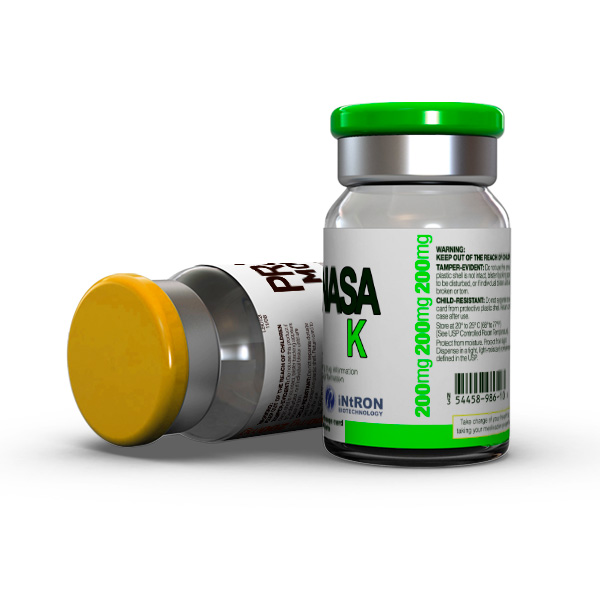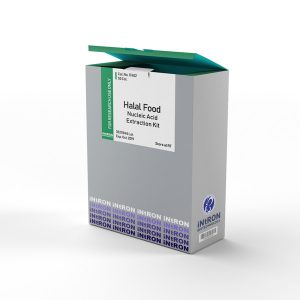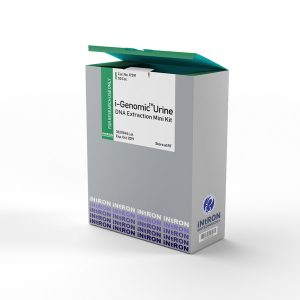Proteinasa K 200mg Grado Biología Molecular
Proteinasa K produced by the fungus Tritirachium album Limber; is a serine protease with broad cleavage activity. Proteinasa K cleaves peptide bonds adjacent to the carboxylic group of aliphatic and aromatic amino acids and is useful for general digestion of protein in biological samples. It has been purified to remove RNase and DNase activities. The stability of Proteinasa K in urea and SDS and its ability to digest native proteins make it useful for a variety of applications including preparation of chromosomal DNA for pulsed-field gel electrophoresis, protein fingerprinting and removal of nucleases from preparations of DNA and RNA. A typical working concentration for Proteinasa K is 50–100μg/ml.
Form: Lyophilized powder.
Recommended Reaction Buffer: 50mM Tris-HCl (pH 8.0), 10mM CaCl2.
Código: 405002 / 200mg
99,00€
Proteinasa K Product Information
PROTEINASA K Molecular Biology Grade from Parengyodontium album (Tritirachium album) is a subtilisin-related serine protease
This recombinant enzyme is expressed in Pichia pastoris, and undergoes extensive purification to yield the highest quality product.
Features
- Recombinant broad-spectrum non-specific protease derived from Tritirachium album and over-expressed in Pichia pastoris.
- High activity and exceptional purity (Molecular Biology Grade & NGS Grade).
- Active at high temperatures (up to 56°C) and denaturing conditions (e.g. in the presence of urea and/or SDS), what makes it ideal for digesting proteins in variety of applications.
- Stable over a wide pH range: 4.0–12.5 (optimum pH 7.5–8.0).
- Decreased amount of host DNA (≤ 10 pg/mg / MBG or ≤ 0.1 pg/mg NGS).
- Available as powder, lyophilized “cake” or liquid.
Applications:
- Extraction of DNA and RNA from different starting materials.
- Purification of target material from contaminating proteins.
- Removal of DNases and RNases during nucleic acids isolation.
Units
One unit of Proteinasa K hydrolyzes urea-denaturated hemoglobin producing color equivalent of 1 μmol tyrosine per 1 min at 37°C and pH 7.5 (Folin & Ciocalteu’s method), 1 U = 1 mAnsonU.
Proteinasa K
| Proteinasa K | |||
|---|---|---|---|

Structure of Proteinase K.[1]
|
|||
| Identifiers | |||
| EC number | 3.4.21.64 | ||
| Databases | |||
| IntEnz | IntEnz view | ||
| BRENDA | BRENDA entry | ||
| ExPASy | NiceZyme view | ||
| KEGG | KEGG entry | ||
| MetaCyc | metabolic pathway | ||
| PRIAM | profile | ||
| PDB structures | RCSB PDB PDBe PDBsum | ||
|
|||
| Proteinase K | |||
|---|---|---|---|
| Identifiers | |||
| Organism | |||
| Symbol | PROK | ||
| UniProt | P06873 | ||
|
|||
In molecular biology Proteinase K (EC 3.4.21.64, protease K, endopeptidase K, Tritirachium alkaline proteinase, Tritirachium album serine proteinase, Tritirachium album proteinase K) is a broad-spectrum serine protease.[2][3][4] The enzyme was discovered in 1974 in extracts of the fungus Engyodontium album (formerly Tritirachium album).[5] Proteinase K is able to digest hair (keratin), hence, the name “Proteinase K”. The predominant site of cleavage is the peptide bond adjacent to the carboxyl group of aliphatic and aromatic amino acids with blocked alpha amino groups. It is commonly used for its broad specificity. This enzyme belongs to Peptidase family S8 (subtilisin). The molecular weight of Proteinase K is 28,900 daltons (28.9 kDa).
Enzyme activity
Activated by calcium, the enzyme digests proteins preferentially after hydrophobic amino acids (aliphatic, aromatic and other hydrophobic amino acids). Although calcium ions do not affect the enzyme activity, they do contribute to its stability. Proteins will be completely digested if the incubation time is long and the protease concentration high enough. Upon removal of the calcium ions, the stability of the enzyme is reduced, but the proteolytic activity remains.[6] Proteinase K has two binding sites for Ca2+, which are located close to the active center, but are not directly involved in the catalytic mechanism. The residual activity is sufficient to digest proteins, which usually contaminate nucleic acid preparations. Therefore, the digestion with Proteinase K for the purification of nucleic acids is usually performed in the presence of EDTA (inhibition of calcium-dependent enzymes such as nucleases).
Proteinase K
is also stable over a wide pH range (4–12), with a pH optimum of pH 8.0.[5] An elevation of the reaction temperature from 37 °C to 50–60 °C may increase the activity several times, like the addition of 0.5–1% sodium dodecyl sulfate (SDS) or Guanidinium chloride (3 M), Guanidinium thiocyanate (1 M) and urea (4 M)[disputed (for: no source cited for temperature) ]. The above-mentioned conditions enhance proteinase K activity by making its substrate cleavage sites more accessible. Temperatures above 65 °C, trichloroacetic acid (TCA) or the serine protease-inhibitors AEBSF, PMSF or DFP inhibit the activity. Proteinase K will not be inhibited by Guanidinium chloride, Guanidinium thiocyanate, urea, Sarkosyl, Triton X-100, Tween 20, SDS, citrate, iodoacetic acid, EDTA or by other serine protease inhibitors like Nα-Tosyl-Lys Chloromethyl Ketone (TLCK) and Nα-Tosyl-Phe Chloromethyl Ketone (TPCK).
Protease K activity in commonly used buffers
| Buffer (pH = 8.0, 50 °C, 1.25 µg/mL protease K, 15 min incubation) | Proteinase K activity (%) |
|---|---|
| 30 mM Tris·Cl | 100 |
| 30 mM Tris·Cl; 30 mM EDTA; 5% Tween 20; 0.5% Triton X-100; 800 mM GuHCl | 313 |
| 36 mM Tris·Cl; 36 mM EDTA; 5% Tween 20; 0.36% Triton X-100; 735 mM GuHCl | 301 |
| 10 mM Tris·Cl; 25 mM EDTA; 100 mM NaCl; 0.5% SDS | 128 |
| 10 mM Tris·Cl; 100 mM EDTA; 20 mM NaCl; 1% Sarkosyl | 74 |
| 10 mM Tris·Cl; 50 mM KCl; 1.5 mM MgCl2; 0.45% Tween 20; 0.5% Triton X-100 | 106 |
| 10 mM Tris·Cl; 100 mM EDTA; 0.5% SDS | 120 |
| 30 mM Tris·Cl; 10 mM EDTA; 1% SDS | 203 |
Applications
Proteinase K is commonly used in molecular biology to digest protein and remove contamination from preparations of nucleic acid. Addition of Proteinase K to nucleic acid preparations rapidly inactivates nucleases that might otherwise degrade the DNA or RNA during purification. It is highly suited to this application since the enzyme is active in the presence of chemicals that denature proteins, such as SDS and urea, chelating agents such as EDTA, sulfhydryl reagents, as well as trypsin or chymotrypsin inhibitors.




















